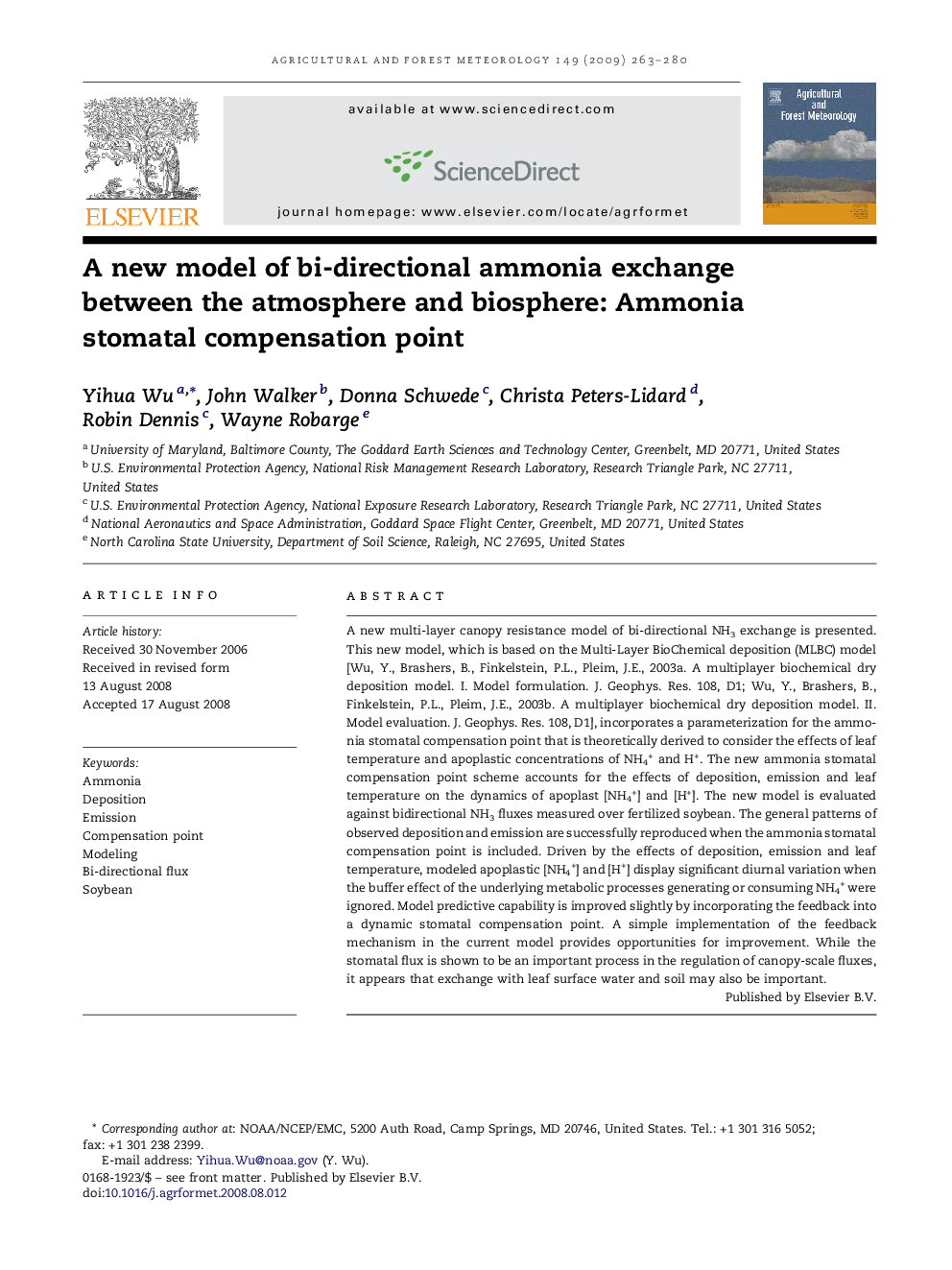| Article ID | Journal | Published Year | Pages | File Type |
|---|---|---|---|---|
| 82347 | Agricultural and Forest Meteorology | 2009 | 18 Pages |
A new multi-layer canopy resistance model of bi-directional NH3 exchange is presented. This new model, which is based on the Multi-Layer BioChemical deposition (MLBC) model [Wu, Y., Brashers, B., Finkelstein, P.L., Pleim, J.E., 2003a. A multiplayer biochemical dry deposition model. I. Model formulation. J. Geophys. Res. 108, D1; Wu, Y., Brashers, B., Finkelstein, P.L., Pleim, J.E., 2003b. A multiplayer biochemical dry deposition model. II. Model evaluation. J. Geophys. Res. 108, D1], incorporates a parameterization for the ammonia stomatal compensation point that is theoretically derived to consider the effects of leaf temperature and apoplastic concentrations of NH4+ and H+. The new ammonia stomatal compensation point scheme accounts for the effects of deposition, emission and leaf temperature on the dynamics of apoplast [NH4+] and [H+]. The new model is evaluated against bidirectional NH3 fluxes measured over fertilized soybean. The general patterns of observed deposition and emission are successfully reproduced when the ammonia stomatal compensation point is included. Driven by the effects of deposition, emission and leaf temperature, modeled apoplastic [NH4+] and [H+] display significant diurnal variation when the buffer effect of the underlying metabolic processes generating or consuming NH4+ were ignored. Model predictive capability is improved slightly by incorporating the feedback into a dynamic stomatal compensation point. A simple implementation of the feedback mechanism in the current model provides opportunities for improvement. While the stomatal flux is shown to be an important process in the regulation of canopy-scale fluxes, it appears that exchange with leaf surface water and soil may also be important.
